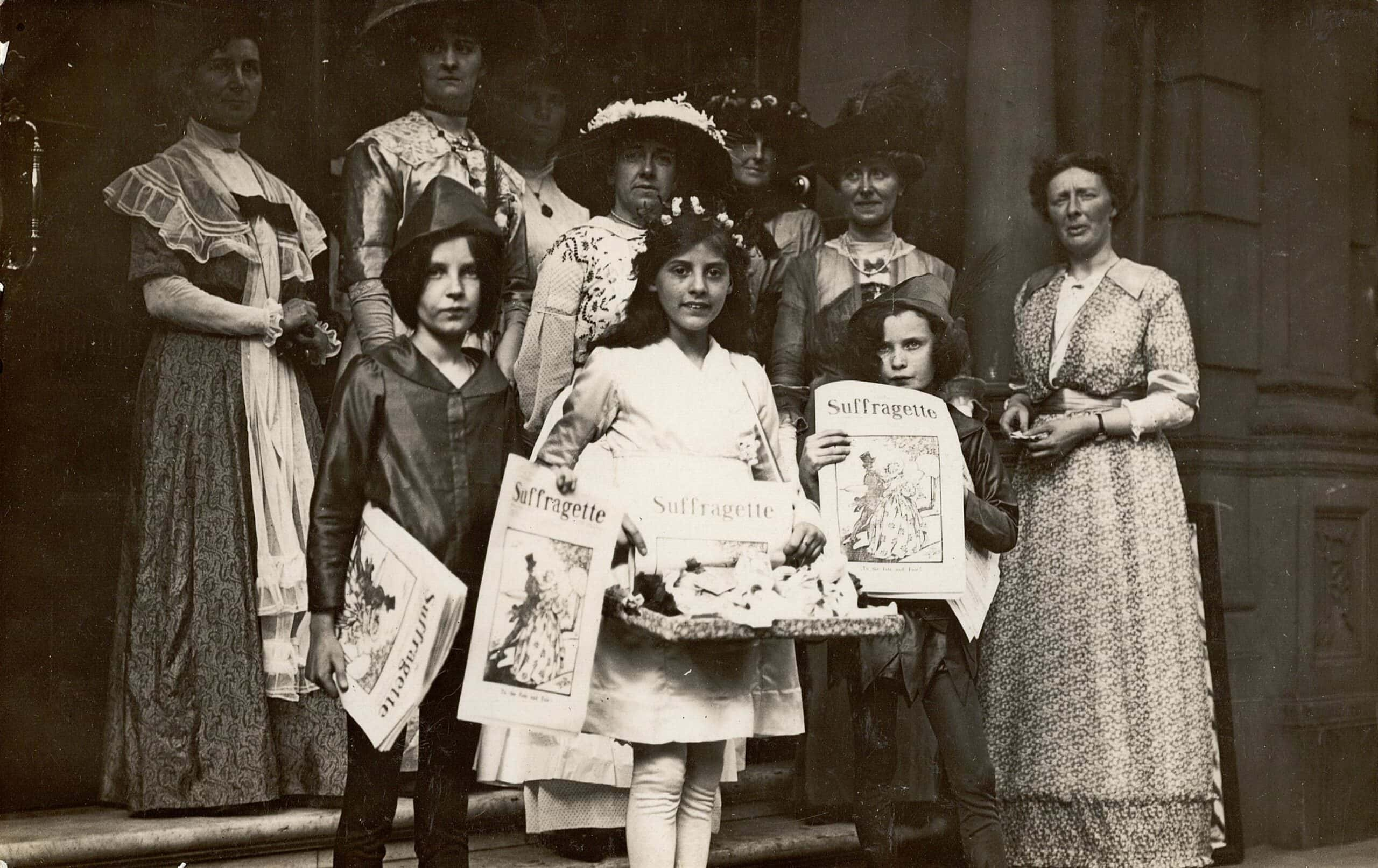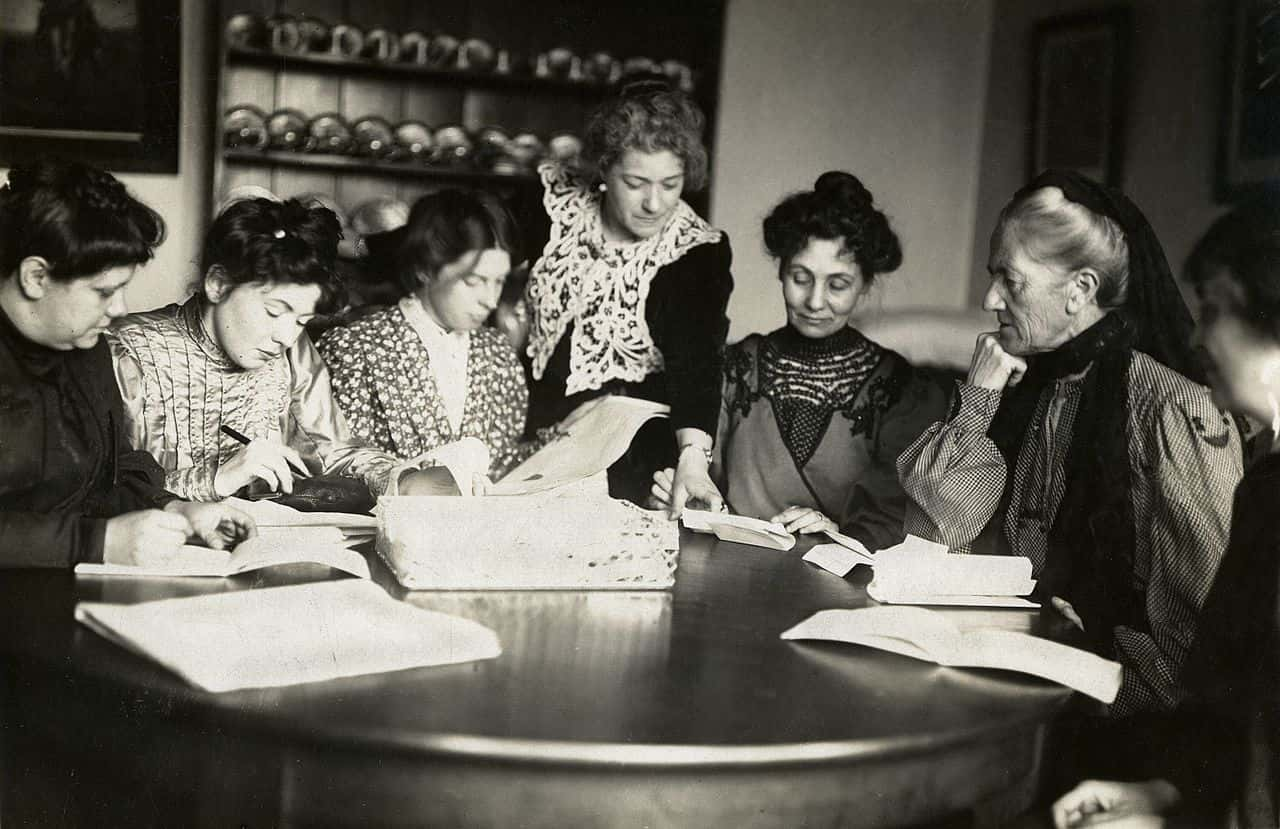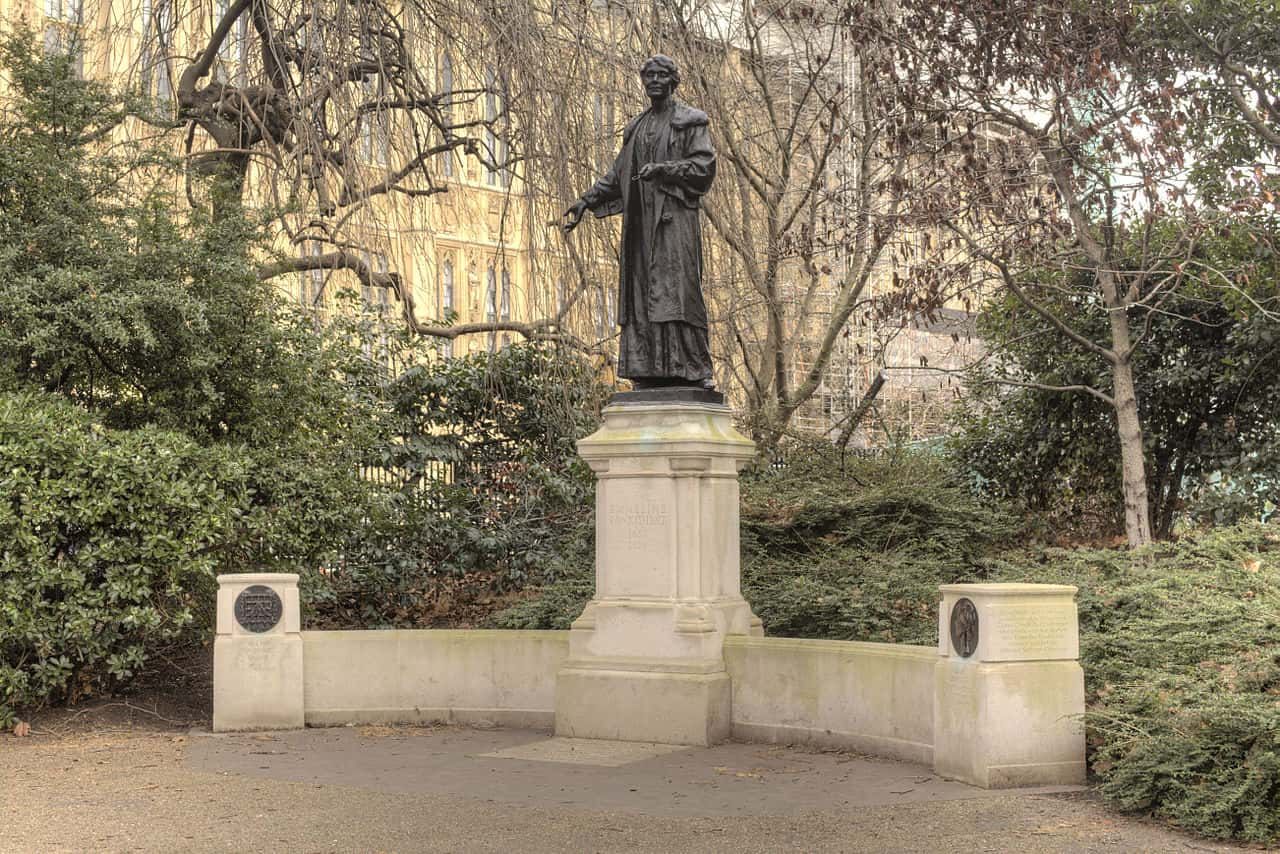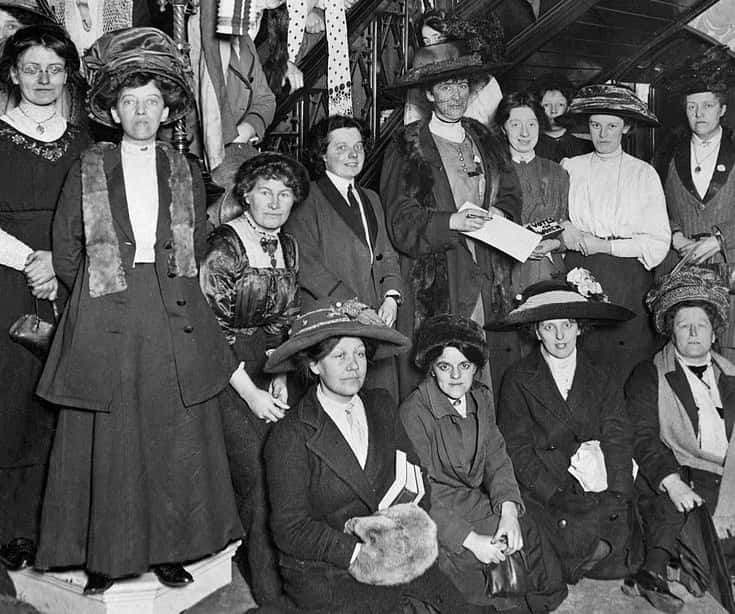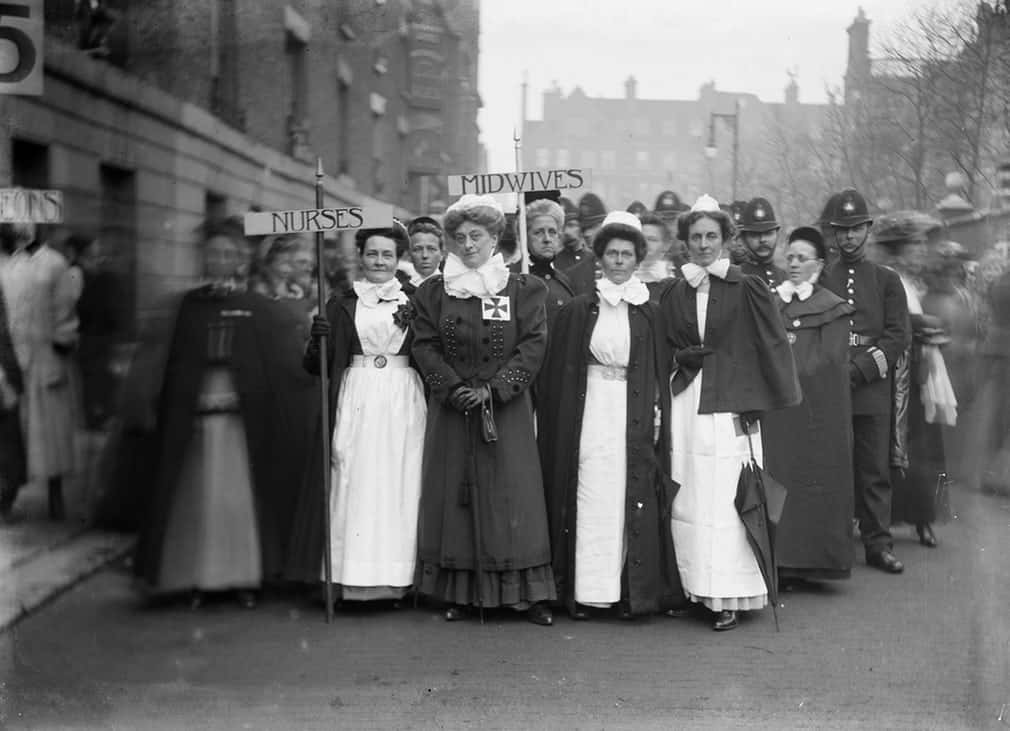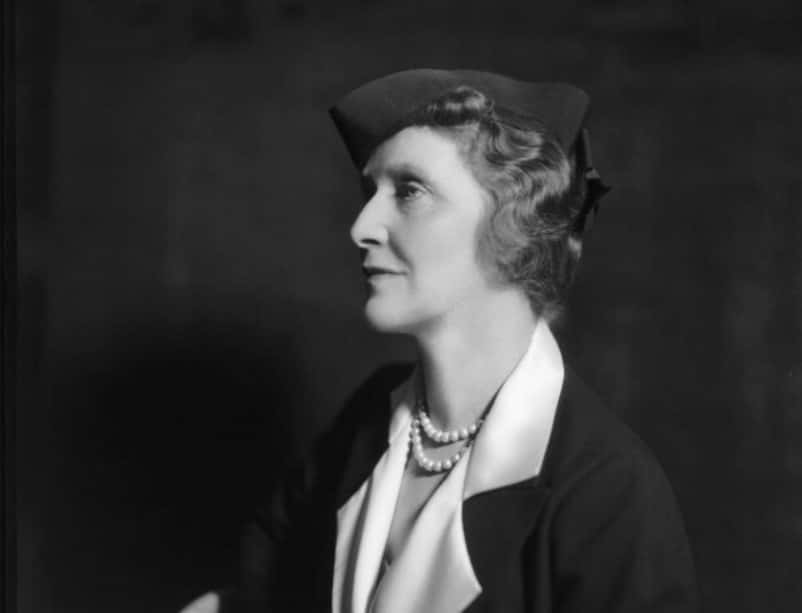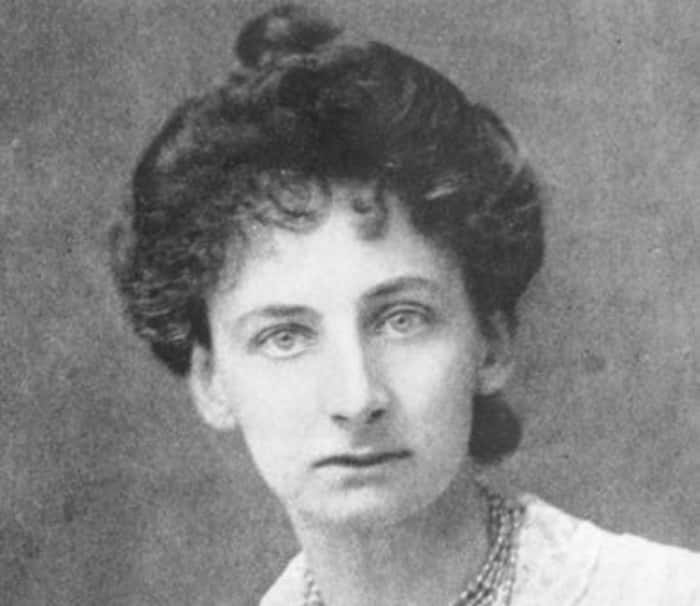Over the years, there have been some incredibly important movements led by women who have demanded equal rights. One of the first groups to gain major traction was the Suffragettes who came out of Britain at the turn of the 20th century. As we continue to strive for real equality, let's look back at the formidable women who came before us and laid the groundwork for the fight that continues to this day.
1. Roots with Mill
Though women had been seeking rights for years, the British suffragette movement really took off when John Stuart Mill took a seat in the British parliament. After taking his seat, Mill was vocal about the treatment of women in his country and the need for there to be new legislation to address the issue. In 1869, he published the influential essay The Subjection of Women.
2. Creation of the “Suffragettes”
The term “suffragette” first appeared in print in 1906, when The Daily Mail used it as a broad way to separate the women of the Women’s Social and Political Union (WSPU) from other women who were protesting in a more conservative manner.
3. Nice Try
The man who coined the term “suffragette” actually meant it to be a bad thing. The women he was talking about, however, took the new dirty word and embraced it with pride. Before long, these women adopted the word for themselves and they proudly became known to all as the suffragettes.
4. All In The Family
A mother and daughter tag-team led the early suffragettes. In 1903, Emmeline Pankhurst founded the WSPU, along with her two daughters Christabel and Sylvia.
5. Making Thoreau Proud
When the Pankhurst women founded the WSPU, they were acutely aware of a sobering reality. There were several groups of women protesting for equality, but they saw little change. So, they decided to adopt alternative tactics. They understood the power of civil disobedience, and even occasionally resorted to arson and other crimes in order to garner attention to their cause. While highly controversial, you've gotta admit: it got results.
6. Slogan
Because Pankhurst understood that it would take actions, not simply the sound of voices, to change things, she created the motto “Deed, Not Words” for WSPU.
7. For Women Only
The WSPU maintained itself as a strictly women’s organization, disallowing the enrollment of men.
8. Doing His Part
Frederick Pethick-Lawrence, Emmeline Pankhurst’s husband, did his part by serving as a joint-editor for the “Votes for Women” publication that she started. Though he couldn't join the WSPU, he still protested and served prison time for his activism. He also participated in the hunger strike.
9. Unequally Equal
In 1918, Britain gave in to the demands for voting rights for women by passing the Representation of the People Act 1918 into law. This, however, came with certain stipulations. In order for women to be able to vote, they had to be over 30 and meet certain property qualifications.

Sign up to our newsletter.
History’s most fascinating stories and darkest secrets, delivered to your inbox daily. Making distraction rewarding since 2017.
10. Rebalancing the New Balance
The Representation of the People Act of 1918 was hardly a great victory. While it did give select women the right to vote, it also gave all men over the age of 21, regardless of property ownership, the right to vote. Parliament did this in order to make sure that women did not carry any voting majority in elections.
11. Combatants First, Women Later
In addition to giving all men over 21 the right to vote, the Representation of the People Act of 1918 also gave men over the age of 19 who served in the Armed Forces the right to vote. This was done in the wake of WWI.
12. Finally
It wouldn’t be until 1928, a full decade later, that all women over the age of 21 gained the right to vote with the Representation of the People (Equal Franchise) Act 1928. In the 1929 election, women would indeed make up the majority of the electorate, at 52.7 percent. And look: the world didn't end! Who woulda thought?
13. Almost Achieving Suffrage
Though the right to vote finally came in 1928, it almost happened much sooner. The Conciliation Bill was basically the same bill at the Representation of the People Act 1918, but came eight years earlier. Even better, it actually received enough votes to be passed into law on its first reading. However, Prime Minister Herbert Henry Asquith stepped in and shut the bill down before its establishment, stating that there wasn’t enough Parliamentary time left. It was a horrible betrayal—but the day got even darker from there.
14. Backlash
After Prime Minister Asquith shut down The Conciliation Bill, there was outrage in the streets. The suffragettes stormed parliament in protest and a clash erupted, resulting in 119 suffragettes getting apprehended. The violence that the authorities committed against the women protesting received national attention, and the day went down in infamy as Black Friday.
15. A Friend in Selfridges
The founder of the famed department store Selfridges was a staunch advocate for the suffragette movement. Henry Gordon Selfridge provided support for the activists by buying advertising space in their publications and flying the WSPU flag above his store.
16. Allied Support
Mr. Selfridge once displayed his support for the suffragette movement by declining to press charges against an activist who destroyed a window to his department store.
17. Male Backing
Besides Selfridge, there were a few other elite men who threw their weight behind the suffragette movement. This included the MPs Keir Hardie and George Lansbury, both early leaders of the Labour Party. Besides regularly raising the issue in Parliament, Mr. Lansbury resigned his seat in Parliament in support, but he was just getting started. Not long after, he was thrown in jail for giving a speech at a WSPU rally in which he stated his support for the suffragettes' arson attacks.
18. Larger Than Labour
Despite still existing today, the Labour Party actually fell behind the suffragettes in terms of popularity and financial support, as the suffragettes outpaced their annual income from subscriptions and donations starting in 1909.
19. Martial Artists
Due to their penchant for engaging in violence during protests, there were many flare-ups on the streets during the suffragette movement. Realizing that they needed more protection, many of the suffragettes trained in the Japanese martial art of Jiu-Jitsu. Beyond that, they also appointed their most effective members as bodyguards to surround and protect prominent members of the movement during protests.
20. Missing the Monumental Moment
When women were finally granted equal voting rights in 1928, Emmeline Pankhurst was not there to see her life’s work pay off. Tragically, she passed only 18 days before.
21. “Unladylike” Women
Much of the propaganda used against the suffragettes attacked them for going against the accepted values of the time. They were presented as women against the “natural order” who were “unnatural,” as they were't living the ideal life of a woman, married with kids. By being strong women, they were portrayed as dangerous because they “feminized” men through their own masculinity.
22. How Many Suffragettes?
It's hard to get a number on just how many suffragettes there were, but in Britain, authorities arrested over 1,000 women during the movement and somewhere between 2,000-5,000 enrolled in WSPU.
23. Another Sister
As the last daughter of Emmeline, Adela Pankhurst was the lost sister of the group. While she participated in many of the protests, including hunger strikes, she was vocally against the militancy of the rest of her family and the WSPU. After leaving the WSPU in 1913, her mother encouraged her to leave the UK and emigrate to Australia. "Encourage" may be a weak word here: Emmeline went so far as to buy her a ticket and give her £20 for the journey. This family feud would last for the rest of their lives.
24. Spoiled Census
In 1911, since they felt that they did not count in society, many suffragettes refused to participate in the census and disrupted it greatly by spoiling their papers, writing in things like “suffragette” for their occupation and “No persons here, only women!” in the headlines.
25. Royal Meetings
Suffragettes used the famed Royal Albert Hall as a venue to hold meetings and rallies. Actually, on top of the suffragettes, anti-suffragettes rented it out too! The WSPU were loyal patrons of the hall, holding over 20 meetings there from 1908 to 1918. However, they later became the first group to be banned from the hall, due to the damages all the disruption they brought with them caused.
26. First Woman MP
Though the first woman elected to Parliament in 1918 was a suffragette, she did not take her seat in solidarity. The first woman, then, to become an MP in Britain was Nancy Astor, who succeeded her affluent husband and was not a suffragette. This got under the suffragettes' skin, as they saw the American Astor as standing for what they were against, being an elite from the upper class. However, over the years Astor would win them over by championing their causes through support other female MPs and committing herself to the fight for real voting equality.
27. Hunger
Hunger strikes were some of the most famous of the WSPU protests. Marion Wallace-Dunlop started the first of these in 1909, as she protested the police’s refusal to grant her the status of a political prisoner while imprisoned.
28. The Martyr
Emily Wilding Davison is famous for being the martyr of the suffragette movement. At the Epsom Derby of 1913, she stepped out in front of the King of England’s horse on the track. The horse didn't stop, and she succumbed to her injuries not long after.
29. New Address
Before the Epsom Debry made her a martyr, Davison was a passionate suffragist who became well-known for other brave protests. Her most famous act was hiding in a cupboard in the House of Commons during the census night of 1911 in order to be able to write in “House of Commons” as her address on the census.
30. Cat and Mouse
Suffragette hunger strikes were a result of suffragettes receiving disproportionately harsh penalties for their protests in the streets. To fight the hunger strikes, guards force-fed their prisoners, leading to serious injuries. In order to address the hunger strikes, the government passed the Cat and Mouse Act of 1913. What this act did, in reality, was release prisoners who were too injured to stay in prison until they recovered, and then reimprison them once deemed healthy enough. A vicious cycle ensued whereupon women would be reinjured once imprisoned again, released, and then reimprisoned.
31. Undercover Mission
In order to uncover the horrific treatment that the authorities subjected upon suffragettes, Lady Constance Lytton went undercover and entered into the prison system. During her imprisonment, guards force-fed her eight times by shoving a four-foot tube down her throat so that liquid could be funneled into her stomach. Constance recollected that after the first force-feeding, the doctor slapped her across the face to convey his contempt for her.
32. Force-Fed Trauma
Lytton eventually revealed her noble identity and authorities promptly released her from prison—but it was too late. Not long after her release, she suffered from a heart attack and a stroke from which she never recovered. She passed at 54 years old, and it's widely believed that her end was a direct result of the horrific treatment she received in prison.
33. The Line They Wouldn't Cross
Although the suffragettes' tactics were often violent, Emmeline Pankhurst gave the strict order that no suffragette should ever kill: “Not a cat or a canary to be killed: No life.”
34. Targets
Over the years of the movement, suffragettes planted bombs inside landmarks such as Westminster Abbey, St. Paul’s Cathedral, Rosslyn Chapel, the Bank of England, the National Gallery, and many train stations.
35. Against The Church
Churches were a particular target for the suffragettes after the Church of England came out and vocally condemned the rights of women’s suffrage.
36. Symbol of Arc
Joan of Arc has become a symbol with oppressed women all over the world, and the suffragettes were no different, as they had a penchant for using Joan of Arc as a symbol for their own struggle.
37. Silent Support
The actions of the militant suffragettes pushed away some powerful would-be supporters. The Archbishop of Canterbury supported women’s suffrage, but he kept this support private to avoid vandalism. Winston Churchill, the Home Secretary at the time, also believed that the militancy of the suffragettes did more damage to the suffrage movement than good. He famously stated that “their cause has marched backwards.” Easy for you to say there, Winny.
 Wikimedia Commons, Yousuf Karsh
Wikimedia Commons, Yousuf Karsh
38. Over the Ocean
The first country to actually enfranchise women in the world was New Zealand, who did so way back in 1893. In the United States, states such as Wyoming had allowed women to vote going back to their time as a territory, and the first state to officially enfranchise women was Washington in 1910. It wouldn’t be until 1920 that women receive their national enfranchisement in the United States, with the passing of the 19th amendment.
39. Stalling Equality
Though Britain has equality regardless of gender, the United States has never officially ratified their Equal Rights Amendment, which was first drafted in 1921 in an effort to guarantee equal rights for all citizens, regardless of gender. As of 2018, the ERA is still in American limbo.




